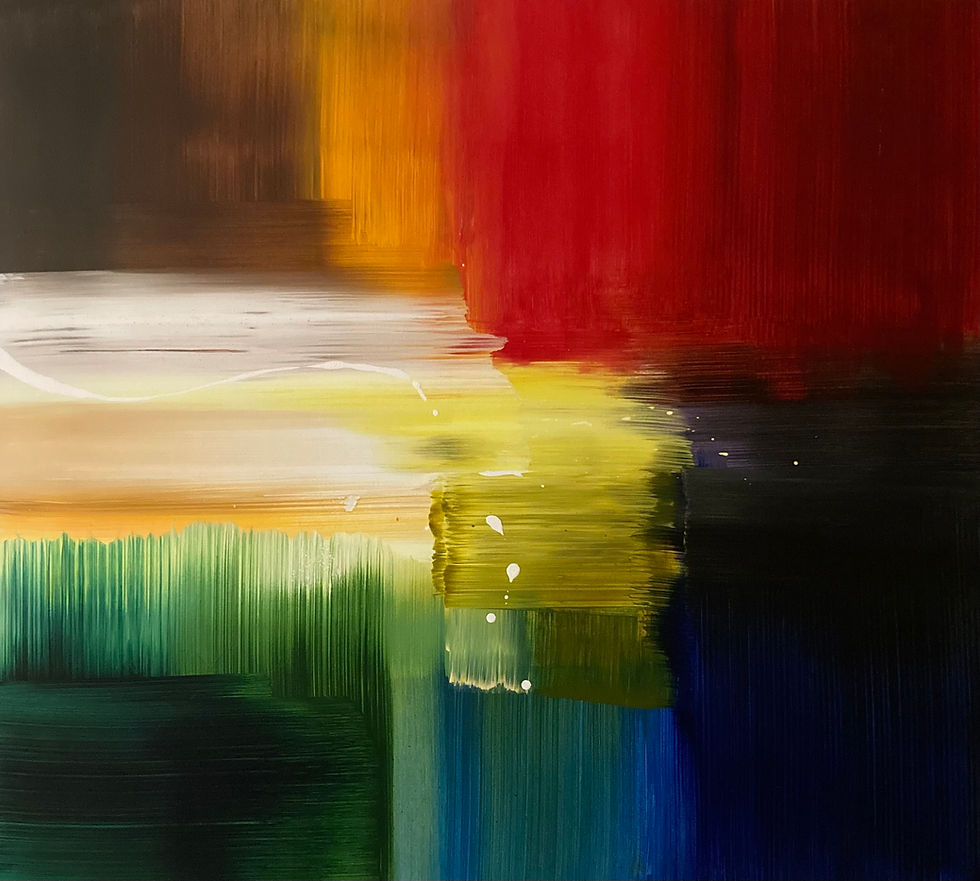Dissolving the horizon
- galerie-adl

- Mar 24, 2024
- 2 min read

The horizon. It determines the boundary beyond which we do not see; a circle around you that limits what you can perceive. It is both an obstacle and an opportunity.
The idea for this virtual exhibition was born from reading the book Lands , by Louis-Nicolas Trépanier.
I first stumbled upon the phrase
“After Nemtayé, there’s nothing.” I was overcome by the sensation of dizziness posed by an imaginary limit, on a territory. Now, how can we represent emptiness and nothing , if not through a play of opposition with matter and fullness , separated by a more or less linear limit?

Opposite: Acrylic and ink on tissue paper, 18 x 14 in.
Below: Acrylic and ink on tissue paper, 18 x 24 in (top), 16 x 20 in (bottom)


It is difficult to go beyond our conception of the horizon, to succeed in diverting its usual meaning. A vertical line is uncomfortable, it prevents us from finding an anchor, it obstructs our view. It carries a bit of this idea of emptiness. But this representation is already no longer a horizon. We need to locate the earth and the sky.

Above: Acrylic and ink on tissue paper, 24 x 16 in.
And yet, an infinite number of perspectives exist to look at the same object. How many of them are accessible to me? “The territory always remains the same, but there is no limit to the landscapes that are superimposed on it.”

Above: Acrylic and ink on tissue paper, 24 x 36 in.
The territory is inseparable from the point of view of the person who examines it, names it, takes possession of it. It is at the confluence between the horizon and the border. We cross the place, without always being aware of what blurs the horizon and how it disappears.





















Comments